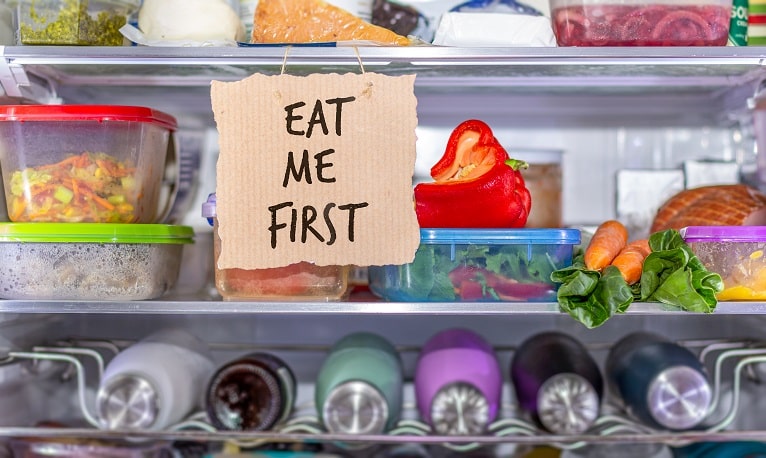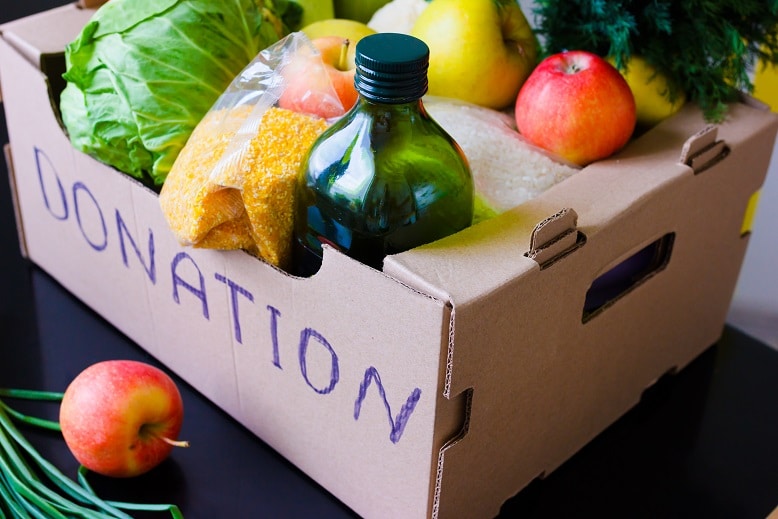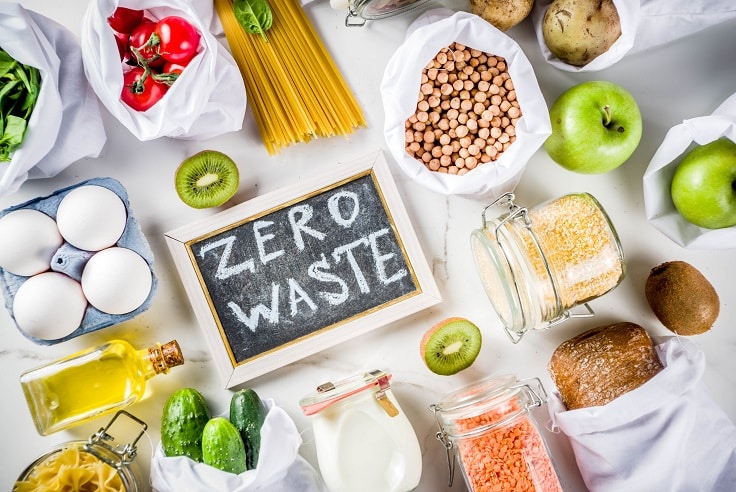
What Is Wasted Food?
Wasted food includes all the food used differently from its initial purpose. In this category, we find prepared food that doesn’t get eaten, plate waste, kitchen trimmings, unsold food from retailers, and by-products from food production plants.
Food is wasted throughout all the food system’s stages, from production and processing to procurement, preparation, and consumption. The numbers used to quantify the phenomenon are astoundingly high, and the worrying news is that they continue to climb.
- According to the Food and Agriculture Organization of the United Nations, 1.6 billion tonnes of “primary product equivalents” of food are wasted globally — that’s 1.3 billion tonnes of edible food per year.
- We use 28% of the world’s agricultural area to produce all this food.
- The greenhouse gas (GHG) emissions from wasting food are close to 3.3 billion tonnes of CO2.
- The water necessary to produce the amounts of food that don’t get eaten is 250km3 — three times the size of Lake Geneva.
Food Waste vs. Food Loss: What’s the Difference?
This is mostly a matter of semantics meant to differentiate the wasted food based on where the organic trash is produced:
- The term “food loss” refers to all the products discarded due to problems in the production, storage, processing, and distribution stages — before the food reaches the consumers.
- The term “food waste” refers to all the appropriate products for consumption but discarded during the retail or consumption phases.
11 Types of Food Waste
When defining the various categories and subcategories of food waste, it’s essential to consider multiple criteria necessary to determine effective waste management solutions.
Edibility
- Edible products: wasted food initially meant for human consumption that might no longer have the expected quality. These products can be divided into eatable, uneatable for humans but still eatable for animals, and uneatable.
- Non-edible products: food that can’t be redistributed for human consumption. Examples: fruit skins, meat bones, vegetable stalks, or grain from breweries.
Origin
- Animal-based: meat, fish, dairy, eggs, honey, and other products produced by an animal. These products can be divided into three major categories: meat, animal products, and animal by-products (waste from processing animal products).
- Plant-based: wasted food made of plants. These can be single products (based on one plant) or mixed products (made of multiple plants).
- In contact with animal products: plant-based food that has been in contact with animal products and might contain traces of them.
Packaging
- Packaged: food that can’t be separated from its package. This category includes two types of products: food in biodegradable (compostable) packaging and food in non-biodegradable packaging (plastic, glass, or metal).
- Unpackaged: food that isn’t enclosed or can be removed from its package.
Supply chain stage
- Catering waste: domestic waste and wasted food generated by services, such as restaurants, schools, hospitals, etc.
- Non-catering waste: food wasted in earlier stages of the supply chain.
Treatment
- Processed products: products ready to be sold to the consumer, whether because they don’t need processing to be eaten or have completed the production process.
- Unprocessed products: food that still needs treatment to be ready for consumption or sale.
Why Food Waste Became a Problem Nowadays?
Multiple causes contribute to the overall growing wastefulness, many of them with deep roots in social and economic dynamics.
People’s buying habits changed significantly towards the second part of the 20th century, and the chase for perfect products created new rules for retailers. Large amounts of fruits and vegetables are discarded because there is little demand for “ugly” products.
Moreover, retailers overstock their shelves with perishable products that turn into waste when no one buys them.
But not just unsold products become wasted food. Oversized servings in restaurants and too large containers in grocery stores make us buy more than we can consume, so a lot of food goes uneaten after it’s being bought.
One crucial factor that influences waste management in the food industry is the confusion generated by labels. With many people not understanding the difference between “sell-by,” “best-by,” “use-by,” and “best before” dates, throwing away food that could still be consumed safely becomes easy — generating up to 7% of domestic food waste. Standard date labels could contribute significantly to kitchen waste management and stop people from discarding eatable food as waste.
Another leading cause of this phenomenon is surplus — farmers produce more than they can sell because they need to consider various factors, from weather to labor availability to pricing. Each of these can impact their bottom lines and influence a producer’s ability to meet demand. Overplanting helps farmers protect themselves against things that could limit yields so they can fulfill their contracts. When everything goes well, the surplus is likely to rot in landfills.

Why Is It Important to Reduce Food Waste?
Not only does wasting food represent an economic problem, but it’s also an unsustainable habit. Part of this waste gets turned into compost, fertilizer, or biogas, but the percentage is insufficient to compensate for this phenomenon’s environmental impact.
- Food waste that decomposes in the fields generates significant methane emissions.
- Wasted food consumes significant amounts of water.
- By overproducing, farmers overwork the soil and reduce its quality.
- Producing too much food impacts biodiversity through overfishing and deforestation.
- Tons of fuel and energy is required to transport, store, and process food that never gets to be used as initially planned.
Ways and Solutions for Food Waste Management
Sustainable food waste management can take many forms with good results. Some of the most common ways to manage wasted food are donations, animal feed production, combustion, composting, and anaerobic digestion to produce biogas and biomethane.
As a general rule, the sooner we can fix the issue in the supply chain, the smaller the loss — it’s more effective to produce less than to upcycle or find ways to reuse food after it’s no longer eatable.
However, it’s difficult to cut down production, so innovative solutions are needed to manage the surplus and ensure wasted food doesn’t end in fields to impact soil, water, and air quality.
Here are some ways to improve the food waste management system:
The supply chain
Multiple players can work together to improve storage, transportation, marketing, labeling, and cooking techniques to reduce food waste.
Food banks
Food banks are non-profit organizations directly involved in reducing food loss across the entire manufacturing chain. They collect food donations and give them to charities that fight hunger. Food banks serve as storage and distribution centers for food that has not been processed or distributed for commercial purposes but is still good for human consumption.

Recycling food waste into animal feed
Products like fruit, vegetable, cereal, and dairy waste can become pork and poultry feed to keep it from landfills and simultaneously reduce the livestock’s environmental impact. This way, less land is necessary to provide food for animal farms, with long-term consequences on biodiversity and greenhouse gas emissions.
Composting
Composting helps recycle food waste and turn it into compost and fertilizer. It’s a sustainable method to support plant growth through natural processes while taking care of the soil, with multiple environmental benefits. Composters manage waste from numerous organic products, including food and bio-degradable packaging, to produce fertilizer for lawns, gardens, and vegetable gardens.
Biogas and biomethane
Food waste can produce biogas through anaerobic digestion. Bacteria break down the organic matter in a sealed environment until it’s transformed into biogas, which can be further treated to obtain biomethane. This way, food waste can help reduce fossil fuel consumption, significantly impacting climate change.
Educating consumers
Most people consider food waste a severe problem, but households’ discarded food is not decreasing quickly enough. Governments and the business environment must do more to inform consumers about what they can do to cut back on waste at home. A coordinated effort is necessary to influence consumer behavior toward improved food management.
Challenges in Food Waste Management
The most significant challenge in food waste management is understanding how each step of the supply chain generates waste. It’s hard to monitor quantities, types of food, and why it gets discarded, making it almost impossible to ideate effective solutions early in the process.
The lack of centralized data makes it challenging to create a waste food management system that solves the issue right at the source. Therefore, most solutions today focus on fixing the problem instead of preventing it. And, even so, we make little progress, as only a small part of the waste is appropriately managed – for example, wasted food takes up more space in US landfills than anything else.
The process is slowed because consumers are responsible for almost half of the wasted food. Consumer behavior needs to change, so people are more international about what they buy and how they treat food. Increasing awareness about wasted food’s impact on the environment and encouraging consumers to get involved should become top priorities.
Legislation worldwide is slowly changing to address the phenomenon. Still, policymakers can only do so much as long as they fail to understand what causes the issue and the possible impact of every solution they come up with. Local farmers, suppliers, retailers, and the food service industry must all come together and find ways to share data and collaborate to implement realistic solutions to this global problem.
Waste Food Management in Tourism and Foodservice
Tourism and the foodservice industry can become strategic partners for effective waste management. As major players in the supply chain, organizations in these industries can promote change and become pilots for programs and initiatives.
The advantages of getting involved are obvious. Wasted food is money thrown out the window. Hence, companies in tourism and foodservice need to pay attention to sustainability to cut costs while reducing their carbon footprint.
However, waste management in the food industry has specific challenges, and leveling up the game can’t happen without support. Organizations need to implement practical solutions with an experience-based perspective and consistency. Moreover, they must invest in infrastructure and staff training to ensure adequate food waste management and meet their objectives.
The Future of Food Waste Management and Its Goals
According to Deloitte, reducing or upcycling food waste has the potential to generate business value, and modern technologies can provide clarity and solutions. Digital technology can help identify and prevent possible waste to significantly reduce the amounts of wasted food that ends in the fields.
Technology can play a crucial role in tailoring solutions with solutions that address issues throughout the entire supply chain, from providing better products and packaging design to finding new, attainable ways to repurpose food. Moreover, digital solutions can also help reach consumers and educate them on responsible consumption.
When wasted food can’t be avoided upcycling is necessary to encourage a circular economy and turn garbage into an asset. Agricultural and food waste has already been used to generate renewable energy with impressive results at home and in small communities. A small digester that uses anaerobic digestion can generate up to six hours of free cooking gas daily using only organic waste.

Final Thoughts
The World Bank estimated that waste produced around the world would rise to 3.40 billion tons by 2050. It’s vital we find realistic and, why not, profitable ways to slow down the phenomenon and make better usage of our resources. Food waste management at home and across industries must become a top priority to save money and protect the environment.






